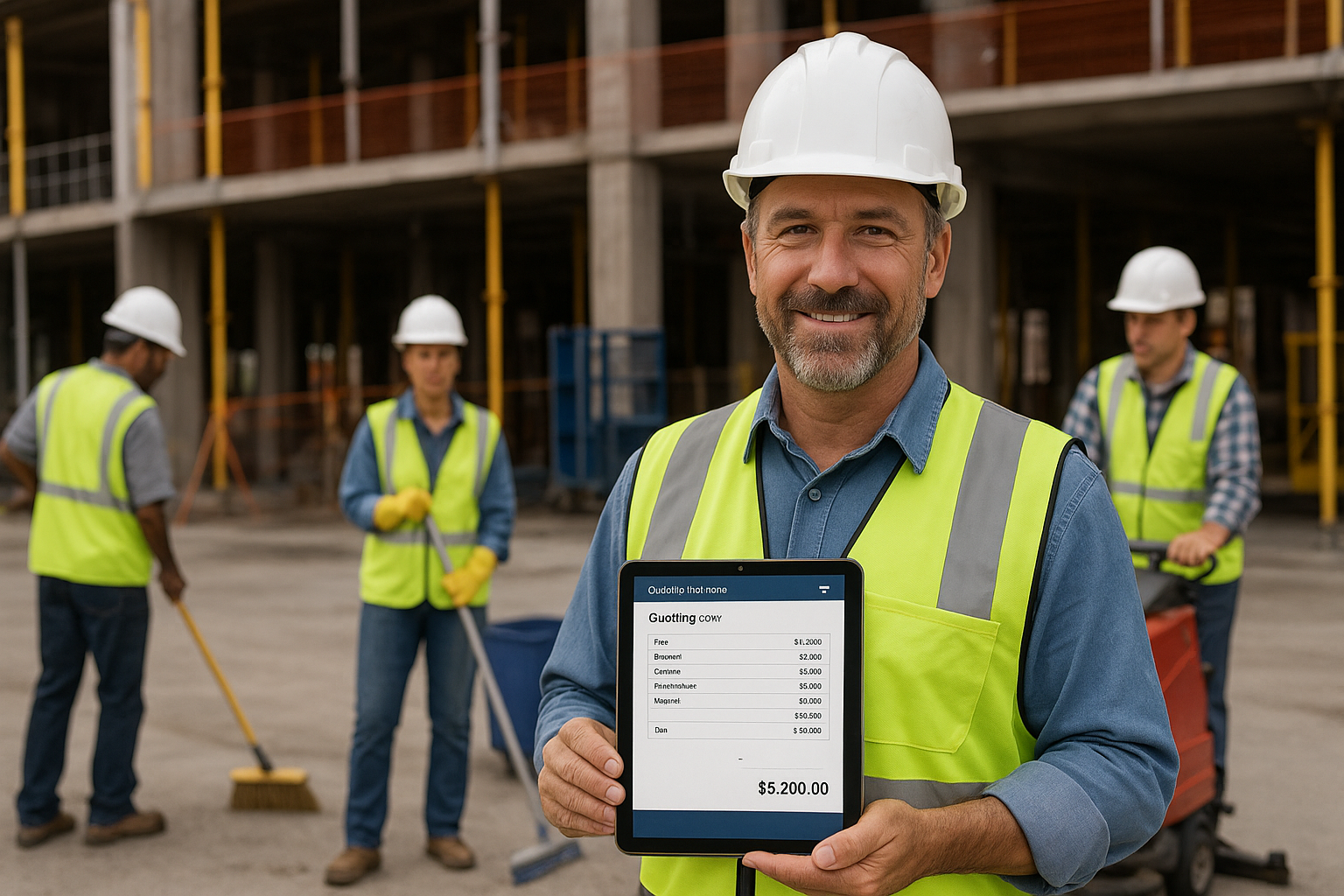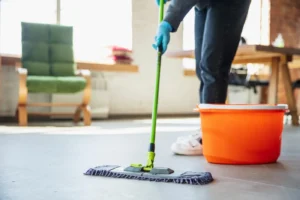Why Scheduling Matters in Building Handover Cleaning
A handover clean is not just another task at the end of construction — it’s the final presentation that defines your client’s first impression.
After months of hard work, that moment must go smoothly. Yet many projects face delays because cleaning is scheduled too late or rushed into one day.
Treating cleaning as an afterthought can lead to recontamination, safety issues, and costly delays. When cleaning is part of the construction timeline — with rough, final, and touch-up phases — sites remain compliant, safe, and impressive. In Australia, Safe Work guidelines even recommend maintaining housekeeping throughout the build.
Partnering with professional cleaners early helps you plan these phases correctly and keep the project on schedule.

Protecting Health and Safety During Handover
Scheduling isn’t only about convenience — it’s also about risk management. Fine dust, especially silica, can linger in the air long after other trades leave. If cleaning happens only on handover day, that dust may settle on finished surfaces or be inhaled by workers.
Following Safe Work Australia’s silica management guidelines means integrating cleaning throughout the project. Professional cleaners can seal vents, use HEPA vacuums, and operate air scrubbers before HVAC systems start. This prevents contaminants from spreading and ensures a healthier environment for everyo

Reducing Conflicts Between Trades
On busy sites, painters, electricians, and joiners often overlap with cleaners. Without coordination, cleaners might arrive to find wet paint or uncured sealant. A clear schedule prevents this.
At Spruces, we work directly with site managers to plan cleaning stages. We confirm the rough clean after plastering but before fittings, schedule the final clean 24–48 hours before handover, and finish with a touch-up clean after punch-list items.
This communication prevents wasted time and reinforces site discipline — everyone knows when cleaning happens and why it matters.

Client Impressions Depend on Proper Planning
A rushed clean just hours before handover leaves streaks, dust, and residue. Even minor flaws can damage your reputation.
By scheduling time for inspections and adjustments, cleaners can polish glass, buff floors, and remove protective films without pressure.
Documenting results with photos and checklists also builds trust. When clients see a spotless site, they associate that quality with your brand. Scheduling isn’t a luxury — it’s an investment in professionalism and reputation.
Setting Up a Precise Cleaning Timeline
The Rough Clean
This phase begins after major trades finish but before painting. Cleaners remove debris, sweep floors, and vacuum plaster dust using HEPA filters.
Rough cleaning reduces health risks, prevents dust from embedding in finishes, and creates a safer, more efficient work environment.
The Final Clean
The final clean prepares the site for inspection. Every surface — ceilings, fixtures, glass, and tiles — is polished until flawless.
Professional teams use air scrubbers and HEPA vacuums to capture the last dust particles before clients arrive.
The Touch-Up Clean
Even after the final clean, last-minute adjustments like door fitting or paint retouching can create new mess. The touch-up clean, done just before handover, removes any new debris or fingerprints.
This quick phase ensures the entire project looks consistent and perfect for presentation.
Clear Communication Keeps Projects Moving
A precise cleaning timeline relies on strong communication between builders and cleaners.
Digital tools like shared calendars and project management apps make coordination easy.
At Spruces, we update cleaning schedules in real time. If a trade is delayed, cleaners are notified instantly. This prevents wasted visits and keeps everyone aligned.
Defining clear scopes of work — what’s included in rough, final, and touch-up cleans — removes confusion and sets expectations from the start.
Collaboration with Other Trades
Professional handover cleaning succeeds when all trades cooperate. During pre-construction meetings, introduce the cleaning company early and explain the cleaning phases.
When trades know the cleaning schedule, they can plan around it and avoid re-contamination of finished areas.
Daily site coordination also matters. Cleaners must know which zones are accessible each day. If tiling is delayed or painting runs over, cleaning should adapt accordingly.
At Spruces, our team leaders attend daily briefings to stay informed. This collaboration saves time and keeps projects running smoothly.
Respect among trades is essential. Cleaners can advise others on surface protection and dust control, while trades ensure the site stays tidy.
The result is a safer workplace, higher morale, and a cleaner, more professional finish.
Tools, Techniques, and Documentation
High-quality building handover cleaning depends on professional-grade tools.
HEPA vacuums remove 99.97% of fine dust, while air scrubbers with carbon filters improve air quality.
Microfibre cloths trap particles without scratching surfaces, and pH-neutral products protect delicate materials like stone or stainless steel.
Proven Techniques
Cleaners follow a top-down approach — ceilings first, then walls, windows, and finally floors. This avoids cross-contamination.
They seal HVAC vents during cleaning, use colour-coded cloths, and remove debris instead of sweeping it aside.
The Power of Documentation
A structured checklist helps track every room and surface. Cleaners note defects, take photos, and share reports with builders.
Digital tools make this seamless. At Spruces, our teams complete checklists on tablets and upload reports instantly.
This transparency protects both builders and cleaners, ensuring every project meets Australian safety and quality standards.
Quality Assurance and Reporting
Consistent training and supervision ensure top performance. Cleaners learn safety procedures, correct chemical use, and care for different materials.
Supervisors inspect work on-site and give immediate feedback to maintain high standards.
Client Reports and Continuous Improvement
After completion, we provide clients with a detailed report including before-and-after photos, tasks completed, and maintenance recommendations.
This shows accountability and builds trust.
Spruces also reviews feedback after every job. If a pattern of issues appears — like recurring dust in vents — we adjust training and processes.
Continuous improvement guarantees better results on future projects and strengthens client relationships.
Conclusion
Building handover cleaning bridges construction and occupancy.
When scheduled correctly and managed with collaboration, documentation, and quality assurance, it keeps projects on track and clients satisfied.
Working with professional cleaners like Spruces ensures every phase — from rough to final to touch-up — runs smoothly.
The result is a safe, spotless, and compliant space ready for handover.
If you want consistent, high-quality results, explore our services for post-construction cleaning on the Gold Coast, final clean packages, and professional cleaners for builders.
For additional guidance, see Safe Work Australia’s housekeeping guidelines and the Australian Building Codes Board’s handover requirements.
Together, we can raise the standard for building handover cleaning across every project.




